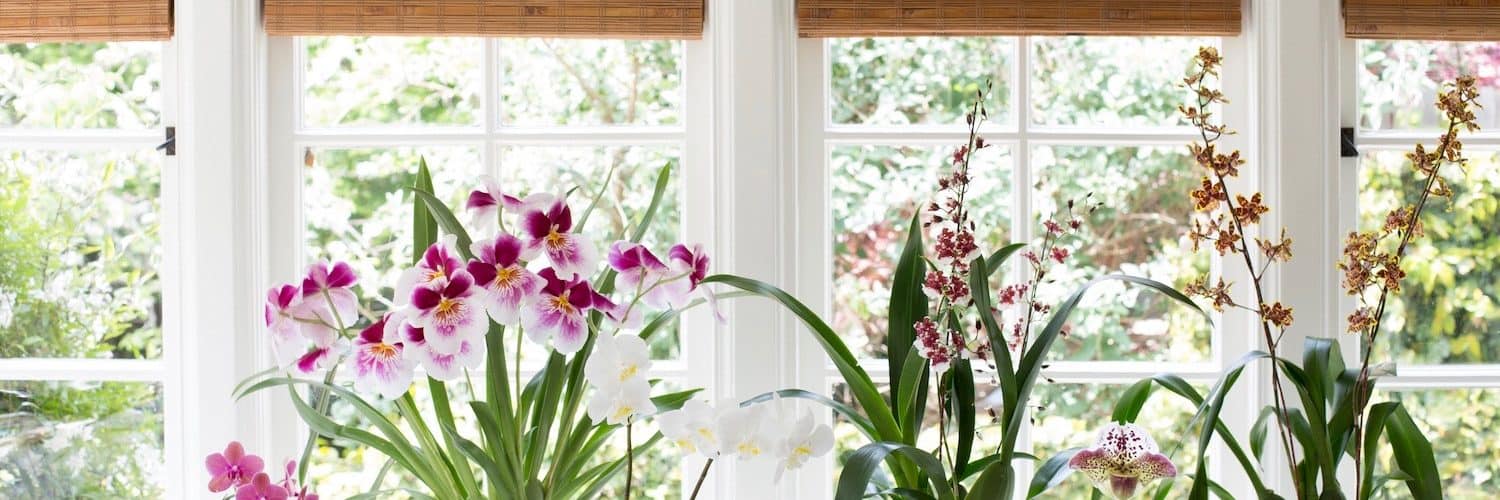One of the indoor gardener’s greatest challenges is the orchid. Growing orchids indoors is a challenge to even the most experienced orchid enthusiast, but the results are well worth the effort.
There are many varieties of orchids available, each with different requirements. So the first step in growing orchids is to choose the variety you want to grow. And while the local department store or home improvement store may stock a few varieties, it is generally advisable to shop at a good nursery, where personnel are available to answer questions.
When shopping for orchid plants, check the leaves, and avoid plants that have patches of brown or black damage which can be a sign of disease. Yellowed leaves can also be a sign of poor health in an orchid plant. Look for bright green, healthy looking leaves.
Since each species has its own light requirements, you may want to do your homework before shopping and try to match your home’s light level with a compatible orchid plant, rather than purchasing just any plant and then trying to tweak the light to fit the plant.
Two good choices for beginners are the Moth orchid (Phalaenopsis) and the Lady’s Slippers. A healthy moth orchid can bloom twice a year, with long-lasting blooms. Their multi-flower spikes vary in color from white to lavender, and they may also have contrasting center colors or stripes. Lady’s Slippers can bloom throughout the year, with blooms lasting up to three months. Lady’s Slippers have an exotic, unusual appearance with striped colors, hairs and warts.
While orchids need 3-4 hours of light every day, too much sunlight can actually “sunburn” the plant. Most growers prefer east-facing windows. A sheer curtain can provide some protection in filtering sunlight. If you allow large amounts of light to reach the plant, leaves will take on a definite yellow cast. While some growers believe that this “hard” method will encourage the most flowers from the plant, others prefer the “soft” method, protecting the plant from excessive light. In “soft” grown orchids, the leaves are a rich, dark green for the greatest contrast between foliage and flower, and the most attractive plants. If an orchid is not blooming, the problem is almost always light-related.
While different varieties of orchids have different preferences, most common indoor orchids will do well in a normal indoor temperature range of 70-75 daytime and 60-65 nighttime. Steam from being placed in close proximity to shower or bath is good for orchids, as it simulates the rain forest of their natural environment. You can also use a humidifier, or place a dish of damp gravel beneath the pot. Misting the leaves can also help to add moisture.
According to most experts, watering is one of the trickiest aspects of growing orchids indoors. In general, water only while temperatures are rising. As a rule, water only when the soil becomes dry. The water should be slightly acidic with a pH from 4.5 to 5. Never let the roots sit in water.
During the summer growing season, fertilizing your orchid plants every 3-4 weeks with a fertilizer designed for orchids will help promote optimum growth and flowering. In winter, cut back on both fertilizing and watering.
The key to successfully growing indoor orchids is to find the right balance of light, temperature, air, water, and fertilizer. It may take you some time, but you will learn to recognize the signs of healthy growth. You also need to check your plant weekly for signs of disease or root rot. Soon you too can be enjoying beautiful flowering orchids in your home!
Two helpful YouTube videos are here:
<>



